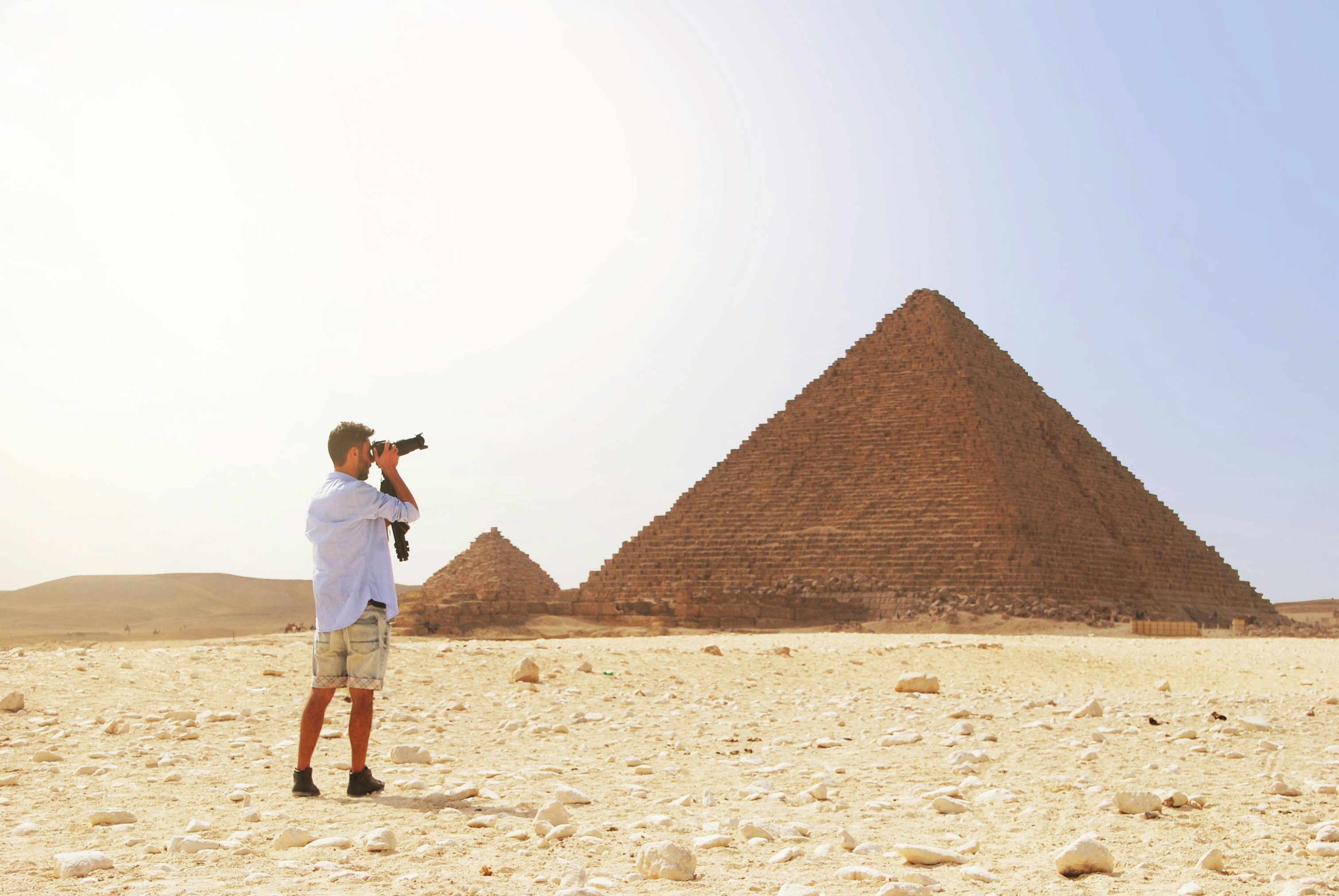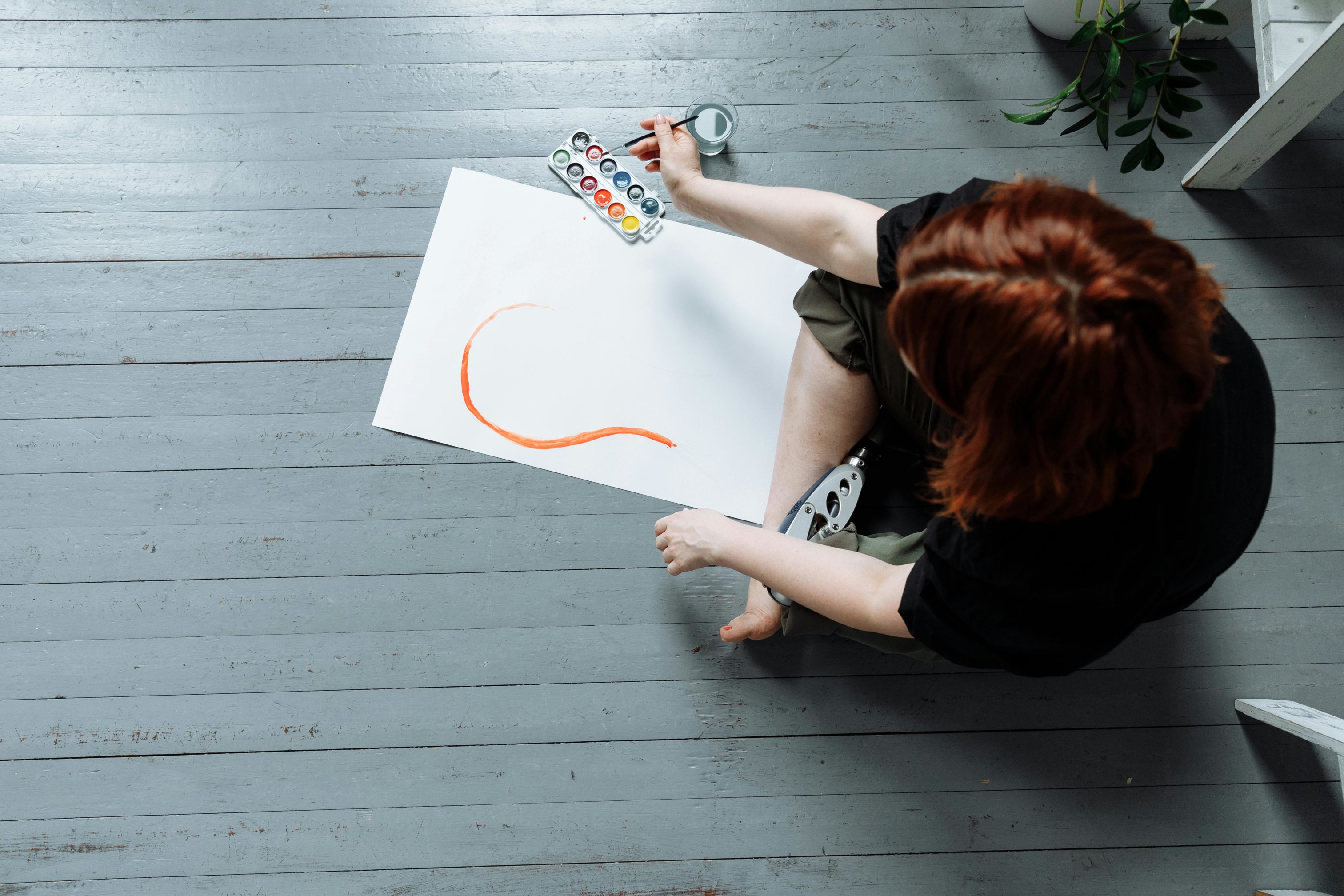Blog post by Anna Sergent
Personality traits are fundamental to understanding creative minds, and the links between art, creativity and the mind are widely understood.
According to a definition from Britannica, creativity is the ability to make or otherwise bring into existence something new, whether a new solution to a problem, a new method or device, or a new artistic object or form.
Creativity is often celebrated as one of the most enigmatic and desirable traits a person can possess. But what makes a person truly creative?
Is it their ability to come up with new ideas or the way they approach life’s challenges?
“One of the functions of imagination is not to make strange things settled, so much as to make settled things strange.”
Marion Milner (British writer and psychoanalyst)
In this blog, we’ll delve into the key personality traits that are often linked to creative individuals. Some of the traits discussed in this blog are openness to experience, curiosity, imagination, resilience, independence, and divergent thinking.
These traits extend beyond mere talent in art or music; they reflect how creative people think, feel, and interact with the world around them.
Further examples of artists or well-known people who exhibit these qualities are provided, along with titles of biographies that go into further detail about their lives and accomplishments.
Openness to Experience

At the core of creativity lies openness—an intellectual curiosity and willingness to explore new ideas, perspectives, and experiences.
Creative people often embrace novelty, whether that’s through travel, learning, or exposure to different cultures and viewpoints.
They actively seek out new experiences, which fuels their creative thinking.
This trait allows them to see the world in a way that others may not, making connections between seemingly unrelated concepts.
Leonardo da Vinci is often cited as the archetype of a creative genius. Known for his groundbreaking work in art, science, anatomy, and engineering, Da Vinci embodied openness to experience.
His notebooks reveal an insatiable curiosity, where he pondered everything from the flight of birds to the inner workings of the human body. “The Leonardo da Vinci biography” by Walter Isaacson illustrates how his openness to various experiences fuelled his creative brilliance.
Is Curiosity A Creative Personality Trait?
Linked closely with openness is curiosity. Creative people are driven by a need to understand how things work and why they are the way they are.
This relentless curiosity pushes them to ask deep, probing questions, often leading to breakthroughs in thinking.
It’s not enough for creative minds to accept things as they are—they want to know why and how things can be different or better.

For example, Albert Einstein’s curiosity about the nature of light and time led to some of the most revolutionary ideas in physics, including the theory of relativity. His persistent questioning of established scientific principles allowed him to redefine fundamental concepts in science.
His biography by Walter Isaacson delves into how Einstein’s curious mind helped him make some of the most important scientific discoveries of the 20th century.
Imagination

Imagination is perhaps the most commonly recognised trait of creative individuals.
They often can think in abstract ways, visualise possibilities, and dream up ideas that others might consider outlandish or unrealistic.
A creative person can easily move beyond the constraints of reality, envisioning entirely new worlds, inventions, or solutions that have never been thought of before.
The imagination of J.K. Rowling, creator of the “Harry Potter” series, is legendary. She conjured an entire magical universe from her mind, complete with its own rules, creatures, and culture.
Rowling’s ability to visualise a detailed and coherent fictional world is a testament to the power of imagination in creative individuals. “J.K. Rowling: A Biography” by Connie Ann Kirk explores how her vivid imagination brought the “Harry Potter” world to life.
Is Resilience A Creative Personality Trait?
Creativity often requires stepping into the unknown, which comes with the risk of failure.
Creative individuals tend to have a high level of resilience and a capacity to persist through challenges and setbacks.
They view failure not as a definitive end but as part of the process of growth and learning. This mindset allows them to take risks, embrace uncertainty, and recover quickly when things don’t go as planned.

Before creating the Disney empire, Walt Disney experienced multiple business failures. His first animation studio went bankrupt, and he even lost the rights to one of his early characters, Oswald the Lucky Rabbit.
However, his resilience allowed him to keep pushing forward, eventually creating Mickey Mouse and building one of the most successful entertainment companies in history.
Disney’s life story, as detailed in “Walt Disney: An American Original” by Bob Thomas, reveals his extraordinary resilience.
Is Independence a Creative Personality Trait?
Many creative people exhibit a strong sense of independence and self-reliance. They are comfortable pursuing their own paths, even if those paths deviate from the norm. This independence is key to their ability to think differently and challenge established conventions. They often rely more on their internal validation and self-satisfaction than seeking approval from others, allowing them to stay true to their vision.

One example of a creator who exhibited remarkable independence is Virginia Woolf.
As one of the leading figures in the modernist literary movement, Woolf broke away from traditional narrative structures and delved deeply into the inner lives of her characters, as seen in works like “Mrs. Dalloway” or “To the Lighthouse.”
Also, “Killing the Angel in the House” is a collection of essays, lectures, and book reviews where Wolf reflects on gender and gives cultural commentary. “Virginia Woolf: A Biography” by Hermione Lee highlights Woolf’s independent spirit as central to her creative genius.
Divergent Thinking
Creative minds often engage in divergent thinking—a cognitive process that involves generating multiple, unique solutions to a problem.
While many people tend to approach problems with convergent thinking (finding the single best answer), creative individuals excel at brainstorming many possibilities.
They are skilled at seeing multiple perspectives and possibilities, even in situations that seem rigid or limiting.

As an example, Steve Jobs demonstrated divergent thinking in his approach to technology and design. His ability to blend the aesthetics of design with the functionality of technology revolutionised the personal computer, music, and mobile phone industries.
Jobs could see multiple possibilities for what technology could become, rather than what it was at the time. “Steve Jobs” by Walter Isaacson discusses his divergent thinking process and how it shaped Apple’s innovations.
Emotional Sensitivity

Though not always discussed, many creative individuals possess a heightened emotional sensitivity.
This sensitivity allows them to tap into a deeper well of emotions, both their own and others, which can be a powerful driver for creative expression.
Whether in art, music, writing, or problem-solving, emotional depth enables them to create work that resonates on a personal and human level.
Frida Kahlo’s deeply personal and emotional paintings explored themes of pain, identity, and self-reflection.
Her work, influenced by her own physical and emotional suffering, continues to touch people on a visceral level. “Frida Kahlo: The Paintings” by Hayden Herrera explores how her emotional sensitivity shaped her art.
Playfulness
Creativity often flourishes in an atmosphere of playfulness and spontaneity. Creative people are more likely to maintain a childlike sense of wonder and play, which helps them think in nonlinear ways. This sense of play can lead to unexpected breakthroughs, as it allows them to think more freely and approach problems with a sense of fun and exploration rather than rigid seriousness.
Salvador Dalí’s surrealist artwork is the epitome of playful creativity. His use of bizarre, dream-like imagery was driven by a playful approach to art, where he often broke the rules of traditional representation to create something entirely new.
“The Secret Life of Salvador Dalí,” his autobiography, reveals his playful attitude toward both art and life.

Nonconformity
Creative individuals are often nonconformists, choosing to stand apart from societal or cultural norms. They are more likely to question authority, challenge the status quo, and resist being confined to traditional ways of thinking.
This trait allows them to push boundaries and introduce innovative ideas that may initially be met with scepticism but ultimately lead to progress.
David Bowie’s ever-changing persona and genre-defying music exemplified nonconformity. Throughout his career, Bowie rejected the conventional boundaries of both music and gender, consistently reinventing himself and his art.
“David Bowie: A Life” by Dylan Jones describes how Bowie’s nonconformity made him one of the most influential artists of the 20th century.
Risk-Taking
Creativity and risk often go hand in hand. Creative people are more comfortable with uncertainty and are willing to take risks that others might shy away from.
Whether it’s introducing a radical idea, experimenting with new techniques, or abandoning a safe career path to pursue a passion, creative individuals understand that innovation often comes with a leap of faith.

Elon Musk has taken some of the biggest risks in the business world. From co-founding PayPal to launching Tesla and SpaceX, Musk’s ventures have consistently challenged conventional wisdom.
His risk-taking has led to revolutionary changes in multiple industries, including electric vehicles and space exploration. “Elon Musk: Tesla, SpaceX, and the Quest for a Fantastic Future” by Ashlee Vance examines how Musk’s bold risk-taking has driven his success.
Intrinsically Motivated
While external rewards (such as recognition, money, or success) may be motivating for some, creative individuals are often driven by an intrinsic sense of purpose. They create not for the accolades but because they feel a deep need to express themselves, solve problems, or make the world a better place. This self-driven motivation often results in more authentic and groundbreaking work.
Van Gogh’s artistic career was driven by an intrinsic desire to create despite receiving little recognition during his lifetime. He painted prolifically and passionately, not for external validation but because he felt a deep need to express his emotions through art. “Van Gogh: The Life” by Steven Naifeh and Gregory White Smith details his intense, intrinsic motivation to paint.
Adaptability
Lastly, a characteristic that sets creativity apart is adaptability. The creative mind is fluid, able to pivot and adapt as new information becomes available or circumstances change. This flexibility allows creative people to adjust their approach, embrace new challenges, and stay open to emerging opportunities that others may not even notice.

Maya Angelou demonstrated adaptability throughout her life as she transitioned from being a singer and dancer to a renowned writer and civil rights activist. Her ability to pivot between artistic disciplines and social causes made her a powerful voice in literature and beyond.
She is known for her poem “On the Pulse of the Morning,” which she read out during Clinton’s first inauguration in 1993, as well as her short poem “Still I Rise”—“You can shoot me with your words, You can cut me with your eyes, You may kill me with your hatefulness, But still, like air, I rise.”
“The Complete Autobiographies of Maya Angelou” showcases her adaptability in navigating multiple creative paths.
The Creative Mosaic of Personality Traits
The personality of a creative person is a complex mosaic of traits, each playing a critical role in how they engage with the world and generate innovative ideas.
While everyone has the potential to be creative in some way, those who consistently exhibit these characteristics tend to thrive in creative pursuits. Those individuals are not just “born” creative but actively cultivate these traits, often through experience, curiosity, and a willingness to push the boundaries of what is known.
In the end, creativity is not confined to the arts or any specific discipline. It is a way of thinking, feeling, and approaching life that can be applied to virtually any field—from science to business, from problem-solving to daily life. By embracing these traits, anyone can tap into their own creative potential and start to see the world through a more imaginative, open, and innovative lens.
Explore our platform to discover the many brilliant creative minds at work in our community of artists!

